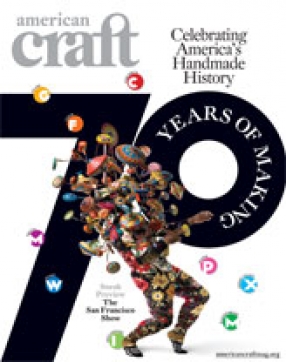
The process of pulling together 70 years of craft history in the United States has been, shall we say, time-consuming. We've debated, fact-checked, and delivered the print version, but we'd love for this collaboration to evolve online. With that, we're asking for your help in building the ultimate craft timeline.
We want this to be a collaborative process, but with a few minor caveats. We may:
• Refuse any suggestion that does not fit with within our editorial objectives
• Edit entries for clarity and factual accuracy
• Determine an event's level of historical significance
One last request: No anonymous submissions. Please include your full name with your submission so that we may credit you appropriately. New additions will be listed with a credit line that includes the submitter's full name and date.
To make a submission, please email us the timeline addition you propose, as well as any supporting documents and images to aid the verification process, to [email protected]. We'll make updates on the first Monday of each month.
Thanks in advance for helping us to make this historical resource even better!






Comments
July 30th, 2011
My understanding is Marvin Lipofsky started the short lived glass program at University of California Berkeley. And, Ruth Tamura started the glass program at California College of Arts (and Crafts). Ask Ruth or Dick Marquis to verify this. The picture on page 039 is certainly of Lino TagliaPietra (not Checco Ongaro) so it must be 1979. And, I see my son, Dante, in the background, straining eagerly to watch the maestro.
Still, a great job on the timeline.
Paul Marioni
Posted By Paul Marioni
August 4th, 2011
In the published timeline, The Furniture Society is identified as a "wood" organization. In fact, the organization is one of a very few in the craft field that is organized around a craft form or product, rather than a material. In the early days, trustees worked assiduously at not using the words "wood" and "furniture" interchangeably. While the majority of Furniture Society members probably do use at least some wood in their furniture; metal, glass, stone, concrete, fiberglass, clay, fiber, paper, and plastics are also commonly used by furniture makers. Furniture makers working in any material are welcomed by the Society.
On the surface this may seem like a small distinction, but it is significant. It would be a shame for any artist working in the furniture medium, whatever material they use, to be discouraged from joining the discussion about furniture making.
Posted By Craig Nutt
Post Your Comment
Fields in bold are required. Your email address is required but not published. Please enter the five digit code as it appears in the text field on its right.